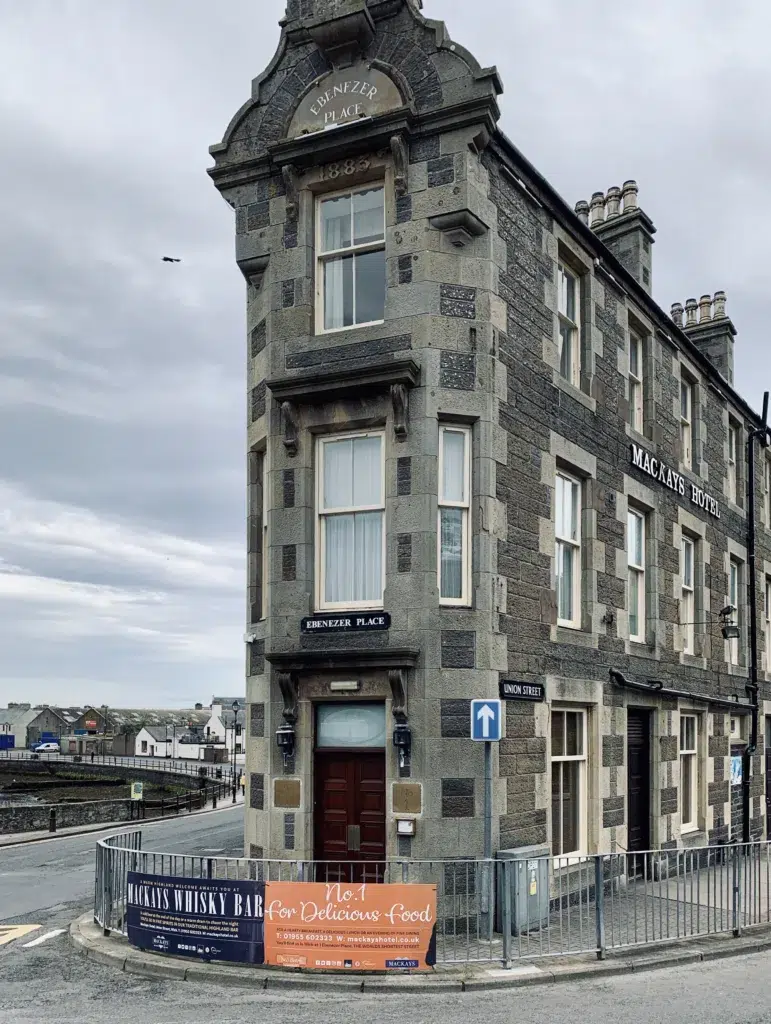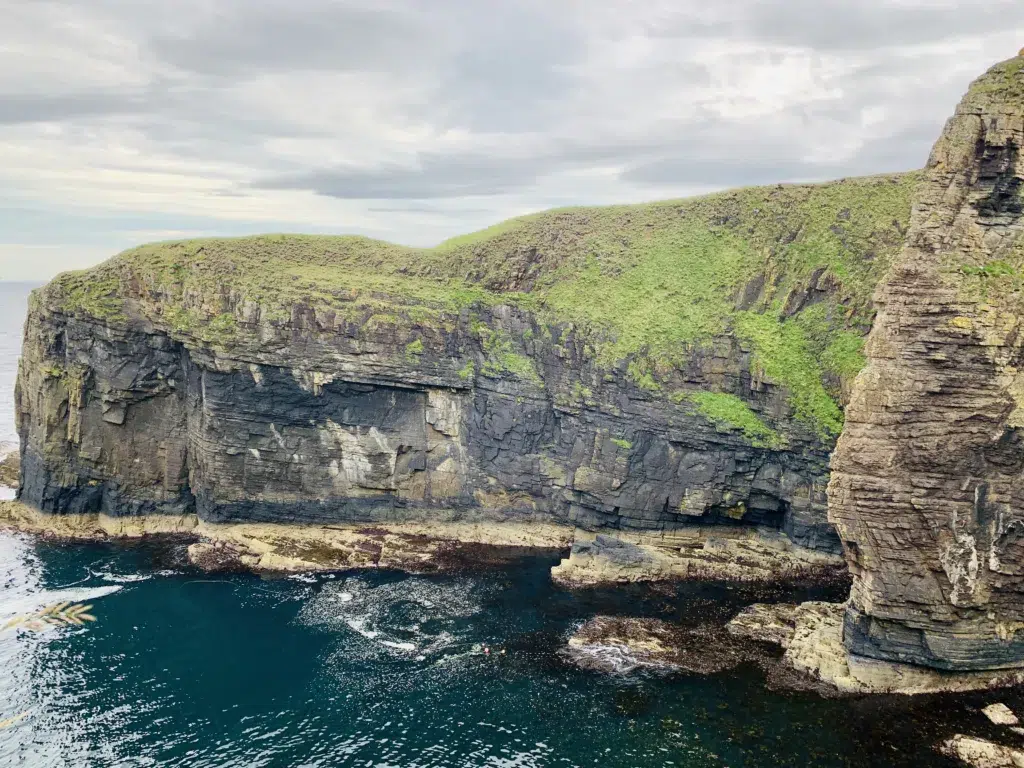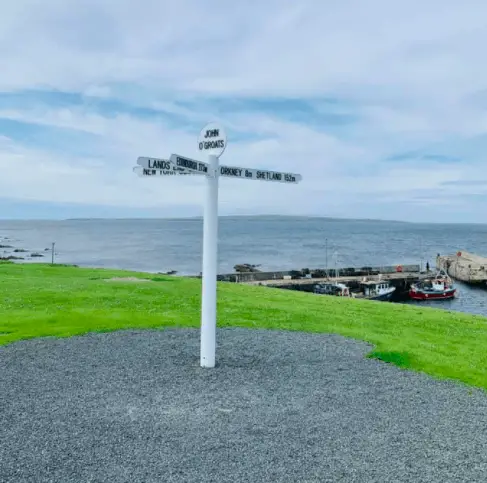Is Wick Scotland Worth Visiting?
Wick is a town in the royal burgh in Caithness, in the far north of Scotland. The town is located near the north east tip of Scotland and is on the A99-A9 road which connects John o’Groats with southern Britain.
The town sits on the River Wick, stretching along both sides of Wick Bay. Wick is made up of two towns, Wick is located north of the river and Pulteneytown is located south of the river.
Wick has benn the administrative centre of Caithness for the past 500 years. Much of the town today, revolves around seafaring traditions, similar to a miniature Aberdeen.
There are many things to do in the Wick and the Pulteneytown area. The area of Wick has lovely beaches, historic ruins, distilleries and incredible wildlife.
I founds that there was a great number of things to do in Wick and the surrounding area during my visit when completing the North Coast 500.
History
Wick is a former Viking settlement which dates back to the Iron Age, there is a hill fort at Garrywhin. Archaeologists discovered brooches and bracelets from the Norse pagan period in 1837.
In the eighth century, Saint Fergus, an Irish missionary lived in the area and christianity ws established. In the 12th century, Wick belonged to Norway until the reign of William the Lion (1165-1214).
Wick and the surrounding area of Caithness have been passed through many clans. The family of Cheyne owned the land then it was inherited to the clans of Sinclair, Sutherland and Keith.
Many clan battles occurred in the area over the 15th, 16th and 17th centuries. By the 18th century, much of the population of Wick were Gaelic-speakers, with many people being able to understand English.
In the years of 1803 the construction of Wick Harbour began. The population of Wick started to grow as the fishing industries attracted work to the area.
Wick shortly replaces Thurso as the centre of both shipping and trade in Caithness. The mouth of River Wick was used as a passage for longships and trading vessels for the Vikings that settled here.
What is Wick Known For?
Wick was once a Viking settlement and its claim to fame was once being the busiest herring ports in Europe in the mid 19th century. Nowadays, Wick the the administrative centre of Caithness.
Facts
- The name Wick appears to be from a Norse word, vik, meaning bay, also, similar to the word Viking.
- Known for being the buisest herring port in europe in the mid 19th century
- Thomas Telford made improvements to the harbour and connected the noth bank and town by bridges.
Public Transport
Trains are available from Inverness to Wick. The total journey time from Inverness is 4 and a half hours and the route is absolutely stunning, passing by beautiful coastal scenery.
Also, there are daily bus services from Inverness, these buses are run by Stagecoach Highlands and the journey takes approximately three hours.
Things To Do
Wick is a lovely historical town which holds many maritime routes. Simply walking around Wick and viewing the harbour and North Sea is pleasant enough.
Visitors can head to cafes, restaurants and bars. The Alexander Bain is a pub which opened in 2003, in a former post office building.
There are plenty of things to do in the surrounding area of Wick including beaches, ruined castles and coastal cliff top walks.
Old Pultneney Distillery
Old Pulteney Distillery is known as the most northerly distillery on the Scottish Mainland. Since 1826, Pulteney single malt whisky has been produced here.
The Genuine Maritime Malt is one of the most famous whiskeys to come out of the distillery. The seafaring history and embodiment fo the history, people and palace is captured in the spirit.
There is an excellent visitor centre with a full range of souvenirs and products available. A tour is the best way to learn about the distillery where you will also get a complimentary dram.
Castle of Old Wick
The Castle of Old Wick is often referred to as the Old Man of Wick. The ruins sit atop the edge of the cliffs, overlooking the sea and is located about half a mile south of Wick Bay.
The collapsed four storey 14-century tower is one of the most striking medieval sites in Caithness. Back in the 1100s the castle was built by Earl Harald Maddadson.
Wick Heritage Centre
The Heritage Centre is located in Pulteneytown, just down one of the streets from Wick Harbour. The centre is run by volunteers and is open during the summer season.
The centre contains a fascinating array of artefacts from the old fishing days. Many displays look into working life, community life, and family life from the 17th, 18th and 19th centuries.
Some displays include authentic items including authentic household furnishings, a cooperage and an art gallery. Also, one of the most poplar displays is the Johnston Photographic Collection showcasing 115 years of history of Wick.
Carnegie Library
Andrew Carnegie funded approximately 2,500 public libraries across the UK, USA and Ireland. In 1898 Wick’s Carnegie Library opened to the public.

Ebenezer Place
Ebenezer Place is the world’s shortest street measures at 2.06 metres and contains just one door. The door belongs to the one address on the street which is MacKay’s Hotel.

Castle Sinclair Girnigoe
Castle Sinclair Girnigoe is located three miles north of Wick on the east coast of Caithness. The ruins of two castles are the 15th-century Castle Girnigoe and the early 17th-century Castle Sinclair.
The ruined castles sits at the edge of Sinclair Bay where there is unspoilt views across the North Sea. Back in the 15th century when the castle was built, the impressive fortresses was a social centre for the high-powered Sinclair family.
Noss Head Lighthouse
Noss Head Lighthouse is on the classic white lighthouses which was built in 1849. Enjoy the clifftop walk from the tiny village of Staxigoe to Noss Head Lighthouse.
The lighthouse is located not far from Castle Sinclair Girnigoe. Noss Head Lighthouse provides lovely enchanting views in nice weather.
Sinclair Bay
Sinclair Beach features white sands and is known by the locals as Reiss Beach. This stunning beach is popular for windsurfing and sand-yachting.
Also, this beach is popular for photographers and wildlife watching. There are rare Scottish seabirds and marine life such as seals and orcas.
The bay is surrounded by high cliffs and there are 16th-century castles at the end of the bay with high cliffs. Sinclair Bay is one of the nicest beaches on the North Coast 500.
Old Keiss Castle
The ruined Old Keiss Castle is located north of Wick at the end of Sinclair Bay. The old fortress was once the residence of George Sinclair, also, the castle was used as a fort in the Second World War.
Cairn o’Get
Cairn o’Get is an amazing historical site which dates back to 5,000 years ago. Long ago, the burial cairn was over 3 metres tall and massive stones sealed the cairn.
Nucleus: Nuclear and Caithness Archive
This archive is located near the airport at Wick. At Nucleus you will have the opportunity to look at photographs, film and documents that help describe the 70 year UK civil nuclear industry.
Nybster Broch
Nybster Broch is a fascinating settlement which dates back over 2500 years ago. The Broch is near the coastline and it is believed to once have been an old stone fisherman’s building and the Caithness broch centre.
Camster Cairns
The Camster Cairns are located south of Wick and are home to 4,000 year old burial cairns. The cairns offer an insight into the burials of civilisations and tribes.

Whaligoe Steps
Whaligoe Steps leads to down to one of the best natural harbours. You can walk down the three hundred and sixty-five steps to be surrounded by the 250 feet tall cliffs and see the ocean crashing against the sea stacks.
Accommodation
There are a wide range of accommodation options in and around Wick. Wick offers a selection of hotels, guest houses, apartments, B&Bs, self-catering homes, pods and lodges.
- The Store: a luxury modern conversion that sleeps up to four people in open-plan living.
- The Forge: a stunning luxury apartment which sleeps 4 people
- Harbour View: a three-bedroom self-catering home which sleeps up to 8 people. Lovely views of the harbour.
- Freswick Castle: Stay in a medieval castle in Freswsick, this magical accommodation sleeps up to 12 people.
- Hillside Camping Pods: clean and tidy camping pods and shepherd huts which are perfect for couples who want to connect with nature.
- Bank Guest House: Each room has been refurbished to a modern style and contains a flat-screen LCD TC, tea and coffee facilities

Final Note
Wick is not far from John o’Groats. Many people who visit Wick drive the extra twenty minutes to the most northern point in Scotland.
At John o’Groats it is worth getting a photograph of the signpost to mark the end of the journey. Also, Wick is a popular town to stay in for those who are travelling on the North Coast 500.
Wick is one of the most remote towns in Scotland that is worth visiting. The town has a population of almost 7,000 people. The closest settlement to Wick is Thurso.
